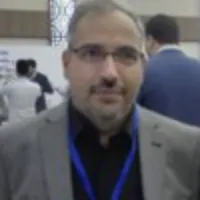Markov Chains of Molecular Processes of Biochemical Materials
Published on: 18th January, 2024
Biochemical systems are analytically investigated after encoding the properties of the dynamics, which rule the time evolution of the transition properties, using some Markov models, such as the Hierarchical Markov-State Models. The present paper is aimed at analytically writing the (finite) Markov chain originating from the considered Markov models. Within this framework, the interaction with the environment is considered, and the ergodicity of the systems obtained from numerical simulation is controlled and compared with the qualities of the Markov chain. The (von Neumann) conditions to be imposed on the Bloch equations for the biomaterial structures to be described analytically in a consistent way are governed. The formalisms of the ’heat bath’ and that of the control of the numerical errors ensure the good measure-theoretical framework and the ergodicity of the finite chain, respectively.The finite Markov chains are investigated and the analytical expressions are presented, after which the Hierarchical Markov-State-Model provides the time evolution of the transition probabilities in biochemical systems.The notion of heat bath is used to describe the interactions of the biomaterial with the environment and thus to control the uses of the projection operators in the Markovian processes where the appropriate measure is defined; the stochastic equations allow one to obtain the wanted measure from the probability spaces.The cases in which a violation of the Markov property of the process occurs, i.e. in open systems, or dissipative processes are also considered. Furthermore, in complex molecules in biological systems, these features are investigated to be possibly even more dramatic. As far as molecular processes are concerned, this occurrence is associated with the appearance of chaotic effects with certain characteristics of potential surfaces: rather than the technique of isocommittors, the method of projectors in measure spaces is used for the Nakajima-Zwanzig paradigm for the density operator; this latter method complementary compares the time-convolution-less technique.The finite Markov chains are finally proven to be ergodic after the control of the numerical errors which provide the Sinai-Markov partitions to be applied for the analysis of the measure space of the Markov chain, that is, one endowed with a Hilbert measure. The von Neumann conditions are therefore newly demonstrated to be apt to be applied to the Bloch equations for biomaterial structures after the use of the notion of heat bath, from which the measure space arises.The qualities of the Hierarchical Markov-Sate Models which bring the analytical expression of the time evolution of probabilities of biomaterials are therefore newly analytically studied.
















